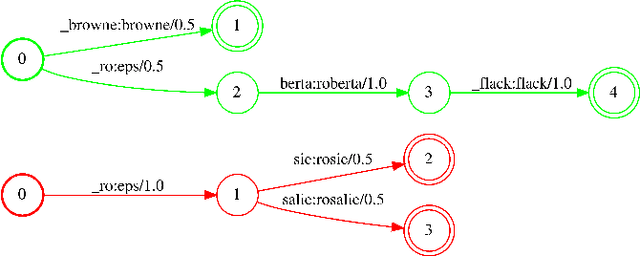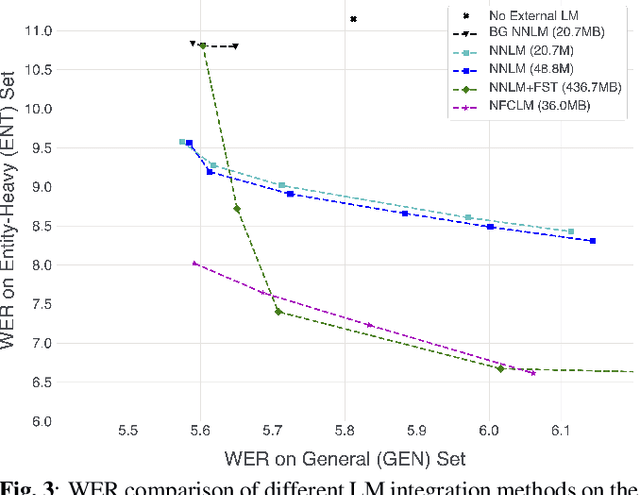Dangna Li
Vevo: Controllable Zero-Shot Voice Imitation with Self-Supervised Disentanglement
Feb 11, 2025Abstract:The imitation of voice, targeted on specific speech attributes such as timbre and speaking style, is crucial in speech generation. However, existing methods rely heavily on annotated data, and struggle with effectively disentangling timbre and style, leading to challenges in achieving controllable generation, especially in zero-shot scenarios. To address these issues, we propose Vevo, a versatile zero-shot voice imitation framework with controllable timbre and style. Vevo operates in two core stages: (1) Content-Style Modeling: Given either text or speech's content tokens as input, we utilize an autoregressive transformer to generate the content-style tokens, which is prompted by a style reference; (2) Acoustic Modeling: Given the content-style tokens as input, we employ a flow-matching transformer to produce acoustic representations, which is prompted by a timbre reference. To obtain the content and content-style tokens of speech, we design a fully self-supervised approach that progressively decouples the timbre, style, and linguistic content of speech. Specifically, we adopt VQ-VAE as the tokenizer for the continuous hidden features of HuBERT. We treat the vocabulary size of the VQ-VAE codebook as the information bottleneck, and adjust it carefully to obtain the disentangled speech representations. Solely self-supervised trained on 60K hours of audiobook speech data, without any fine-tuning on style-specific corpora, Vevo matches or surpasses existing methods in accent and emotion conversion tasks. Additionally, Vevo's effectiveness in zero-shot voice conversion and text-to-speech tasks further demonstrates its strong generalization and versatility. Audio samples are available at https://versavoice.github.io.
Neural-FST Class Language Model for End-to-End Speech Recognition
Jan 31, 2022


Abstract:We propose Neural-FST Class Language Model (NFCLM) for end-to-end speech recognition, a novel method that combines neural network language models (NNLMs) and finite state transducers (FSTs) in a mathematically consistent framework. Our method utilizes a background NNLM which models generic background text together with a collection of domain-specific entities modeled as individual FSTs. Each output token is generated by a mixture of these components; the mixture weights are estimated with a separately trained neural decider. We show that NFCLM significantly outperforms NNLM by 15.8% relative in terms of Word Error Rate. NFCLM achieves similar performance as traditional NNLM and FST shallow fusion while being less prone to overbiasing and 12 times more compact, making it more suitable for on-device usage.
Density Estimation via Discrepancy Based Adaptive Sequential Partition
Mar 11, 2018



Abstract:Given $iid$ observations from an unknown absolute continuous distribution defined on some domain $\Omega$, we propose a nonparametric method to learn a piecewise constant function to approximate the underlying probability density function. Our density estimate is a piecewise constant function defined on a binary partition of $\Omega$. The key ingredient of the algorithm is to use discrepancy, a concept originates from Quasi Monte Carlo analysis, to control the partition process. The resulting algorithm is simple, efficient, and has a provable convergence rate. We empirically demonstrate its efficiency as a density estimation method. We present its applications on a wide range of tasks, including finding good initializations for k-means.
 Add to Chrome
Add to Chrome Add to Firefox
Add to Firefox Add to Edge
Add to Edge